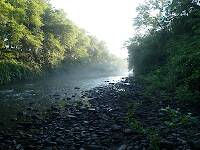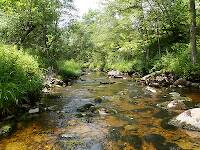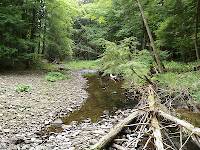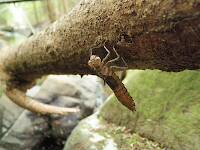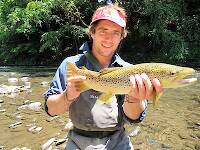
Blue-winged Olives
Baetis
Tiny Baetis mayflies are perhaps the most commonly encountered and imitated by anglers on all American trout streams due to their great abundance, widespread distribution, and trout-friendly emergence habits.
Featured on the forum

This one seems to lead to Couplet 35 of the Key to Genera of Perlodidae Nymphs and the genus Isoperla, but I'm skeptical that's correct based on the general look. I need to get it under the microscope to review several choices in the key, and it'll probably end up a different Perlodidae.

Troutnut is a project started in 2003 by salmonid ecologist Jason "Troutnut" Neuswanger to help anglers and
fly tyers unabashedly embrace the entomological side of the sport. Learn more about Troutnut or
support the project for an enhanced experience here.
Altoidmatt on Jan 16, 2010January 16th, 2010, 1:50 pm EST
I've recently came across a peeking caddis pattern that has the pupa extending beyond the curve of the hook, looking like an emerging pupa, I believe they use phesant tail for the case and green chenille for the pupa. The chenille trails behind the fly giving it a life like motion I guess. Has anyone fished this pattern during or before a caddis hatch? Does it work? I have fished caddis pupa but never this type of pattern.
Wbranch on Jan 16, 2010January 16th, 2010, 2:28 pm EST
Typically the Peeking caddis fly is fished drifting on, or near, the bottom. The very design of the fly is to suggest the caddis larva's head and a portion of the body protruding out of the case constructed from little pieces of wood, tiny pieces of gravel etc. I've never seen a recipe with a tail - as far as I know the larva has no tail or if it has one it is so short to be of no consequence to a fly tier.
I tie mine with a lead wrapped hook shank, rough dark or light Hare's Ear fur tied to within 3/16" of the eye, a very short dubbed abdomen of cream, olive, or bright green, and a picked out black fur head to replicate the little legs. IMO it would be somewhat ineffective to fish it during a caddis emergence because prior to the emergence the larva morphs to the pupal stage prior to swimming up in the water column and splitting the pupal shuck and fly away.
I tie mine with a lead wrapped hook shank, rough dark or light Hare's Ear fur tied to within 3/16" of the eye, a very short dubbed abdomen of cream, olive, or bright green, and a picked out black fur head to replicate the little legs. IMO it would be somewhat ineffective to fish it during a caddis emergence because prior to the emergence the larva morphs to the pupal stage prior to swimming up in the water column and splitting the pupal shuck and fly away.
Catskill fly fisher for fifty-five years.
Lastchance on Jan 17, 2010January 17th, 2010, 12:53 am EST
What Wbranch says and also it's a pattern you could fish most of the year. Of course in the fall I fish them in smaller sizes because the second batch of larva are smaller. If I'm correct I think the second brood, for lack of a better word, is next year's grannom caddis? You better check on that last sentence.
Bruce
Bruce
Taxon on Jan 17, 2010January 17th, 2010, 1:49 am EST
Hi Bruce-
You have(5) different species of Brachycentrus in PA, but I believe all are univoltive, i.e. have only one generation per year. The emergence is in May and June, so the smaller ones you see in their larval stage in the fall would (as you say) be next year's emergers.
You have(5) different species of Brachycentrus in PA, but I believe all are univoltive, i.e. have only one generation per year. The emergence is in May and June, so the smaller ones you see in their larval stage in the fall would (as you say) be next year's emergers.
Wbranch on Jan 17, 2010January 17th, 2010, 2:27 am EST
Taxon wrote -
"have only one generation per year." I have no formal entomological talents whatsoever only having fished NY and PA rivers for trout fifty years. The Grannoms and Apple caddis emerge in periodic waves, throughout the day, for about a week in early May if the water temperatures are appropriate. Some rivers get the Grannom and others get huge emergences of the Apple caddis. Some rivers get both insects.
"have only one generation per year." I have no formal entomological talents whatsoever only having fished NY and PA rivers for trout fifty years. The Grannoms and Apple caddis emerge in periodic waves, throughout the day, for about a week in early May if the water temperatures are appropriate. Some rivers get the Grannom and others get huge emergences of the Apple caddis. Some rivers get both insects.
Catskill fly fisher for fifty-five years.
Quick Reply
Related Discussions
Topic
Replies
Last Reply
1
May 5, 2009
by GONZO
by GONZO
3
Sep 24, 2012
by Entoman
by Entoman




